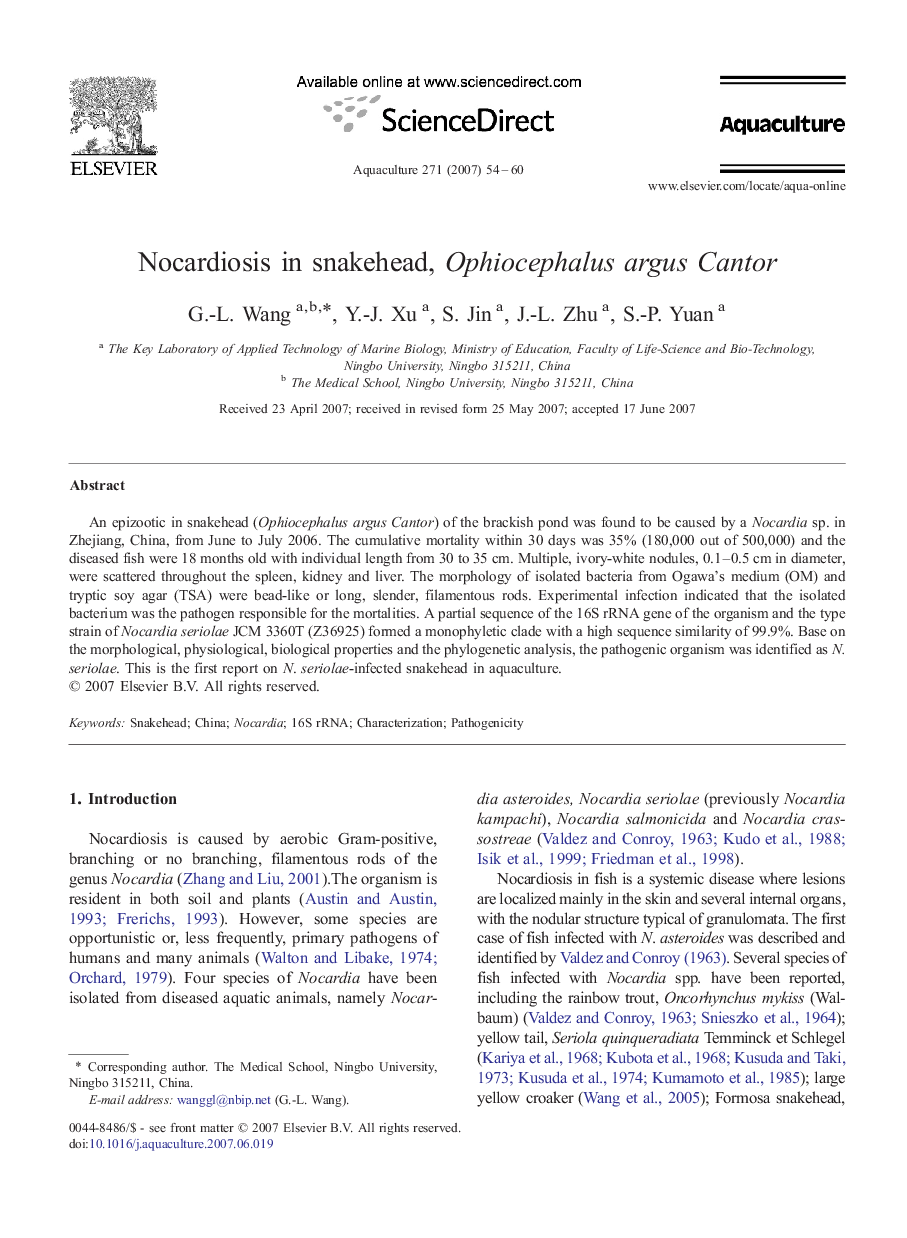| Article ID | Journal | Published Year | Pages | File Type |
|---|---|---|---|---|
| 2425129 | Aquaculture | 2007 | 7 Pages |
An epizootic in snakehead (Ophiocephalus argus Cantor) of the brackish pond was found to be caused by a Nocardia sp. in Zhejiang, China, from June to July 2006. The cumulative mortality within 30 days was 35% (180,000 out of 500,000) and the diseased fish were 18 months old with individual length from 30 to 35 cm. Multiple, ivory-white nodules, 0.1–0.5 cm in diameter, were scattered throughout the spleen, kidney and liver. The morphology of isolated bacteria from Ogawa's medium (OM) and tryptic soy agar (TSA) were bead-like or long, slender, filamentous rods. Experimental infection indicated that the isolated bacterium was the pathogen responsible for the mortalities. A partial sequence of the 16S rRNA gene of the organism and the type strain of Nocardia seriolae JCM 3360T (Z36925) formed a monophyletic clade with a high sequence similarity of 99.9%. Base on the morphological, physiological, biological properties and the phylogenetic analysis, the pathogenic organism was identified as N. seriolae. This is the first report on N. seriolae-infected snakehead in aquaculture.
